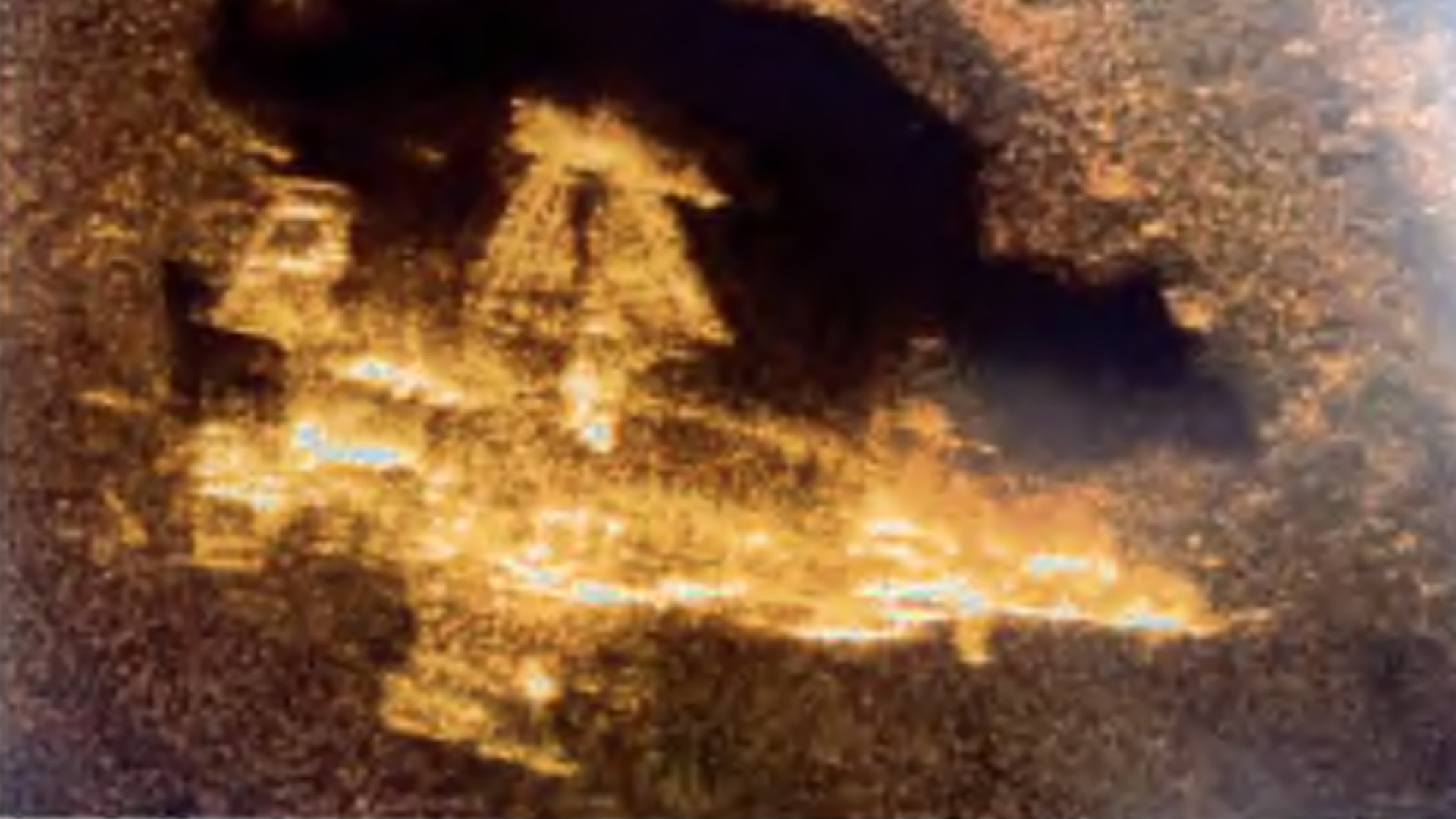Nearly two years after a British F-35B crashed in the Mediterranean after an aborted takeoff attempt from the Royal Navy aircraft carrier HMS Queen Elizabeth, we now have a sonar image of what the jet looked like resting upside down on the seafloor. This comes from a final report of the investigation into the accident in November 2021, which highlights broader concerns about safety and security aboard the carrier during its debut operational cruise.
The U.K. Ministry of Defense released the 148-page report, portions of which are redacted, earlier today. It says that the most immediate cause of the mishap involving the F-35B — serial ZM152 and also known by its construction number, BK-18 — was that one of the stealth jet’s intake blanks had become stuck in the intake itself. This had already been confirmed in an interim report British authorities released last year.
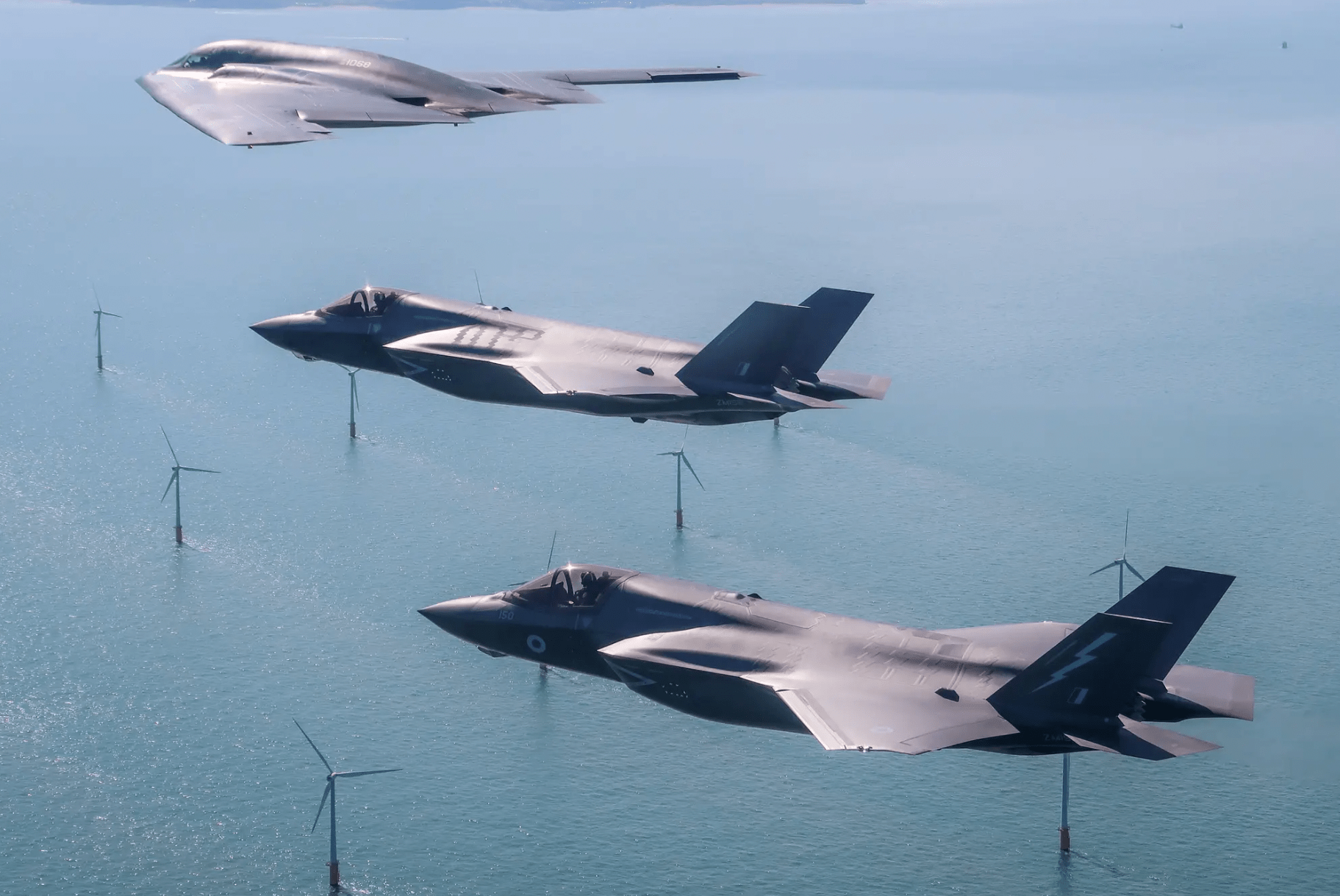
The blanks at the root of the November 2021 accident are supposed to cover the intake and help protect it and the aircraft’s engine from foreign object damage (FOD). In this case, the blank became FOD itself. The deck crew did not notice it had gotten wedged deep in the intake, leading to the accident.
With the blank reducing airflow to the engine, the pilot experienced a loss of power on the takeoff roll. Instead of the 38,000 pounds of thrust that they thought they were getting based on the throttle settings, only 31,500 pounds were actually being delivered, equivalent to a 17 percent deficit.
As the F-35B reached the carrier’s ‘ski-jump’ ramp, the pilot made the decision to try to abort the takeoff. This process involved reducing the aircraft’s throttle to idle and allying the brakes. However, the jet had enough momentum to take it over the end of the ramp, at which point the pilot ejected.
Footage showing the final moments of ZM152, with the video in question having apparently been captured on a cell phone from the video camera system on HMS Queen Elizabeth:
Thanks to a combination of wind, the forward movement of the ship, and the swing of the parachute, the pilot ended up back on the deck of the warship. Their parachute canopy snagged on a light shroud at the end of the ramp and tangled in flight deck nets to the side of the top of the ramp.
The stricken aircraft plunged into the sea and remained briefly afloat alongside the carrier before sinking to the bottom of the Mediterranean. It came to rest largely intact, but inverted on the seabed, at a depth of over 6,500 feet. A number of “minor parts,” including the Martin Baker US16E ejection seat, end up separated from the rest of the aircraft during the accident, but were later located near the main wreck, according to the report.
Somewhat ironically, the flow of water into the aircraft, including the intakes, forced out the air intake blank, sending it bobbing to the surface, where it was recovered.
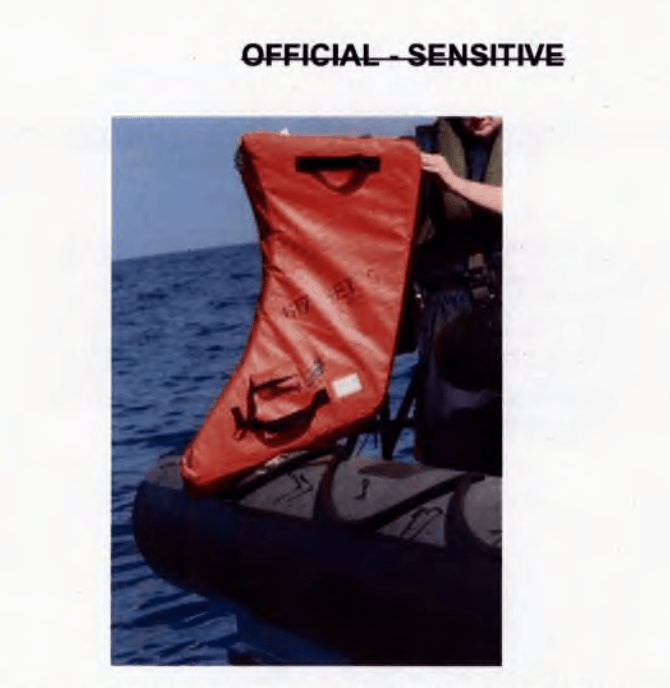
The main wreckage of the fighter and the other “detached” parts were ultimately brought to the surface in December 2021, as we reported here, at a cost of around $3.35 million. A month later, unofficial imagery of the salvaged jet appeared on social media, which you can read more about here.
As for the aforementioned intake blank, this was part of a set of protective equipment colloquially known as “red gear,” on account of its color. These items are generally intended to be placed around the aircraft when not flying, for its own protection, and that of the crew.
At the same time, the red gear has particular relevance to the F-35, in terms of making it harder for potentially hostile actors to conduct espionage, according to the report. With its stealth technology and other highly advanced features, many aspects of the jet remain closely guarded secrets.
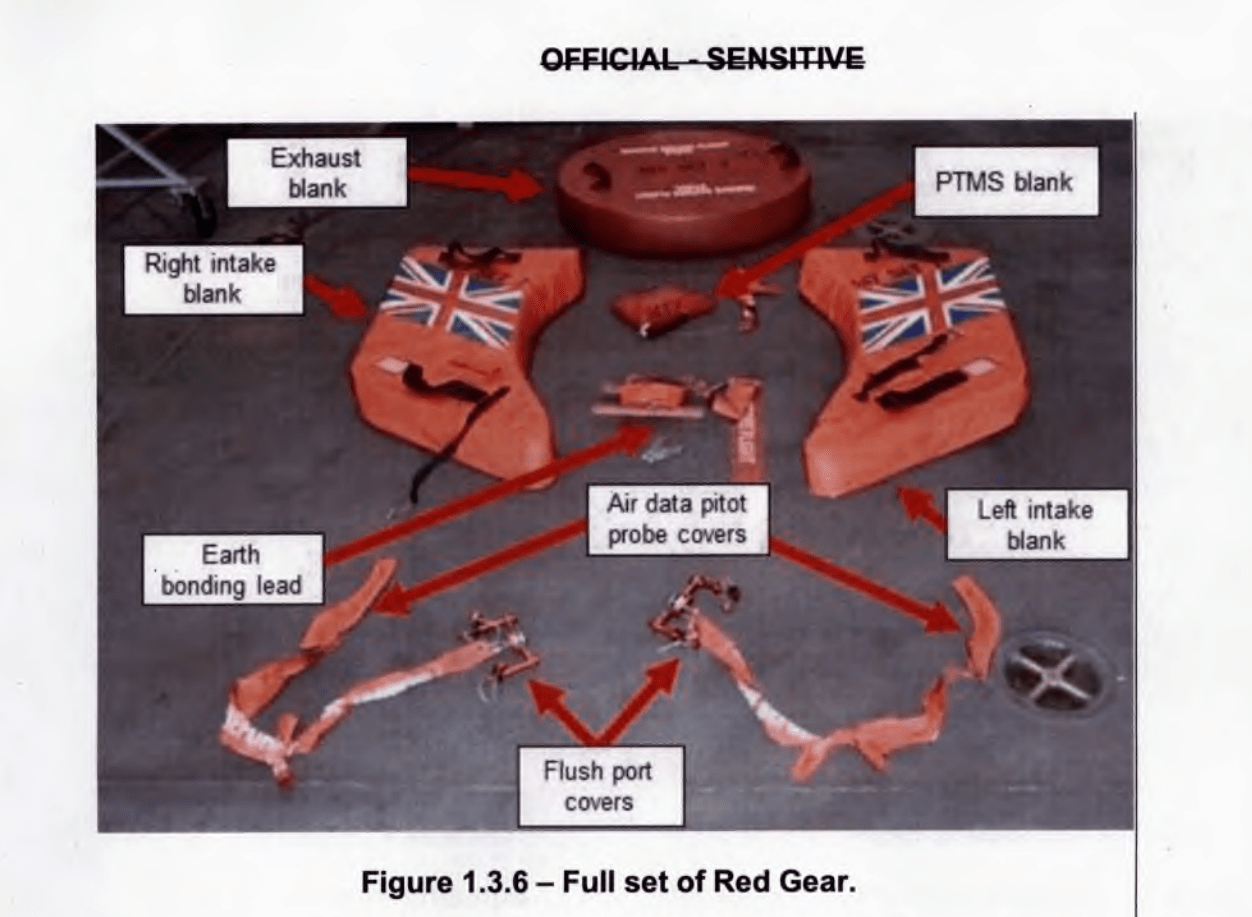
The report notes that, because of the F-35’s sensitivity, the red gear would routinely be fitted to the jets when they were in port, to protect from prying eyes, but does not elaborate on exactly what these fixtures would help conceal. The intake covers would prevent people from getting a closer look at the serpentine ducting that helps shield the fan face of the jet’s F135 engine from enemy radars. This is a key part of the aircraft’s stealthy design.
Regardless, once at sea, amid the frenetic activity of daily flying operations, the red gear would often not be used. The primary reason for this was the realization that it was fairly easy to lose the different items of equipment and that they could, therefore, become a FOD hazard. In particular, a gust of wind over the deck or jet wash from another aircraft could cause one or more red gear items to go astray.
In fact, the report gives examples of other occasions when intake blanks were dislodged, blown out, or lost overboard during shipborne operations. It also mentions four similar incidents involving air intake blanks on U.S. F-35s, although none of these led to aircraft losses.
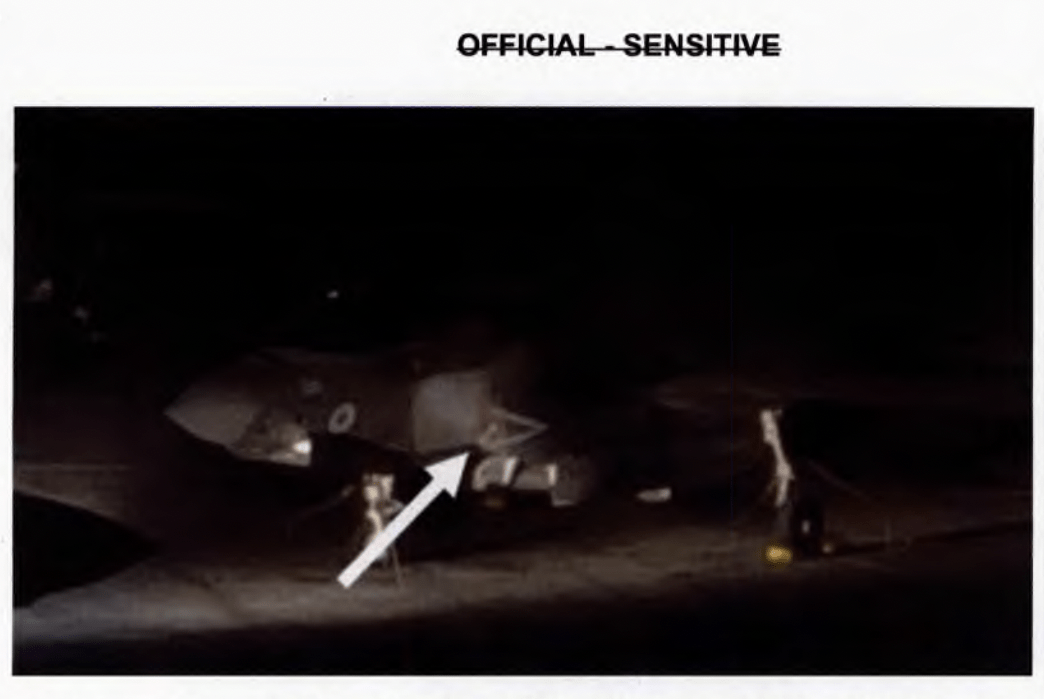
As well as an intake blank becoming unaccounted for and getting inside the intake, the aforementioned serpentine ducting also meant that it was very hard for anyone to see where it had ended up.
Interestingly, the report also describes how there have been three different iterations of the intake blank design, based on successive shortcomings.
The first design was a wrap-around cover from an unspecified source. Lockheed Martin later determined “these were difficult to fit and caused damage to the external skin of the aircraft, as well as materially breaking down and presenting a FOD risk,” the report says.
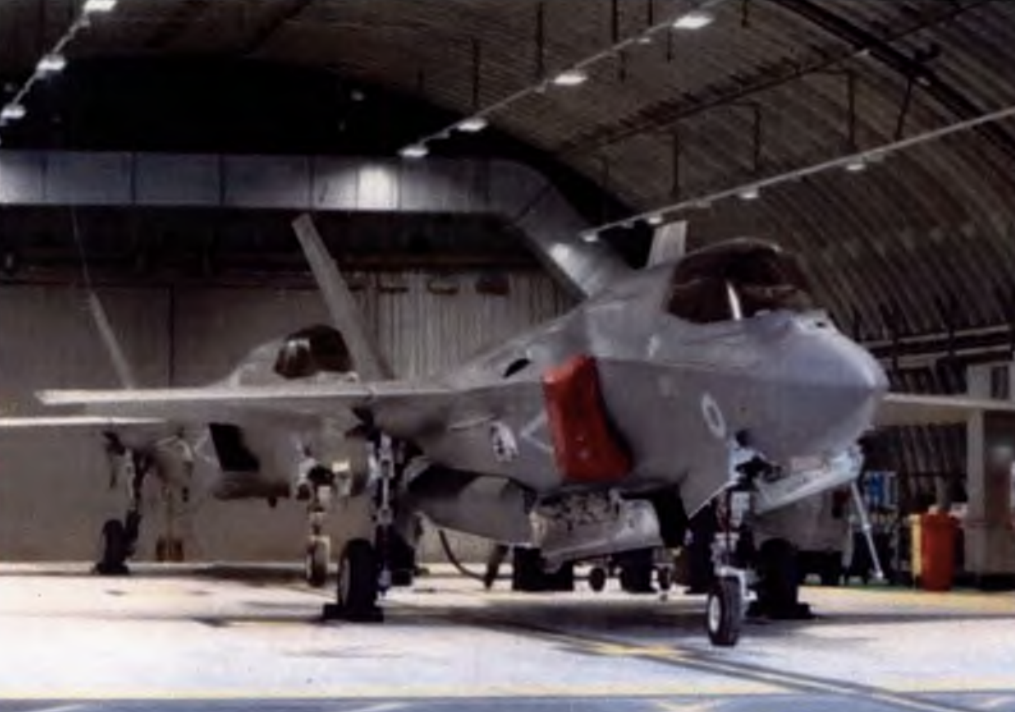
A second design involved an intake ‘plug’ locally manufactured at Marine Corps Air Station (MCAS) Beaufort in South Carolina in the United States, where British F-35B pilots spent extensive time training. “In the U.S., private companies offered customized aircraft blanks which were used on both US and UK F-35Bs at MCAS Beaufort,” the report notes.
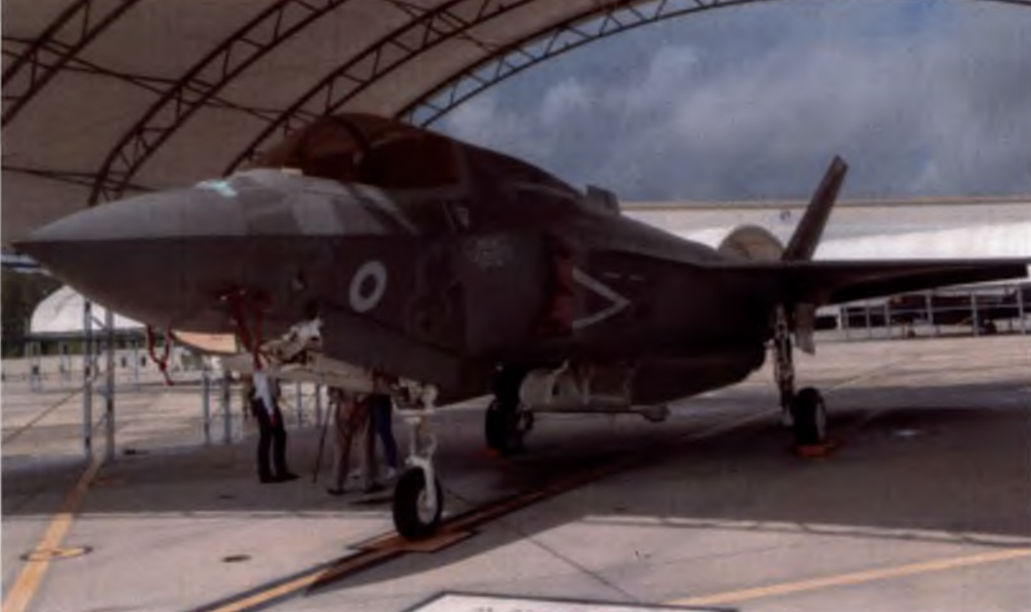
Eventually, a third design from Lockheed Martin was put into service. These were the approved blanks in British use at the time of the accident. Even the third variation was found to have issues, with the report noting that the ‘Remove Before Flight’ lettering could peel off, causing yet another FOD hazard. To mitigate this, maintainers onboard HMS Queen Elizabeth removed the lettering and submitted a report regarding the issue.
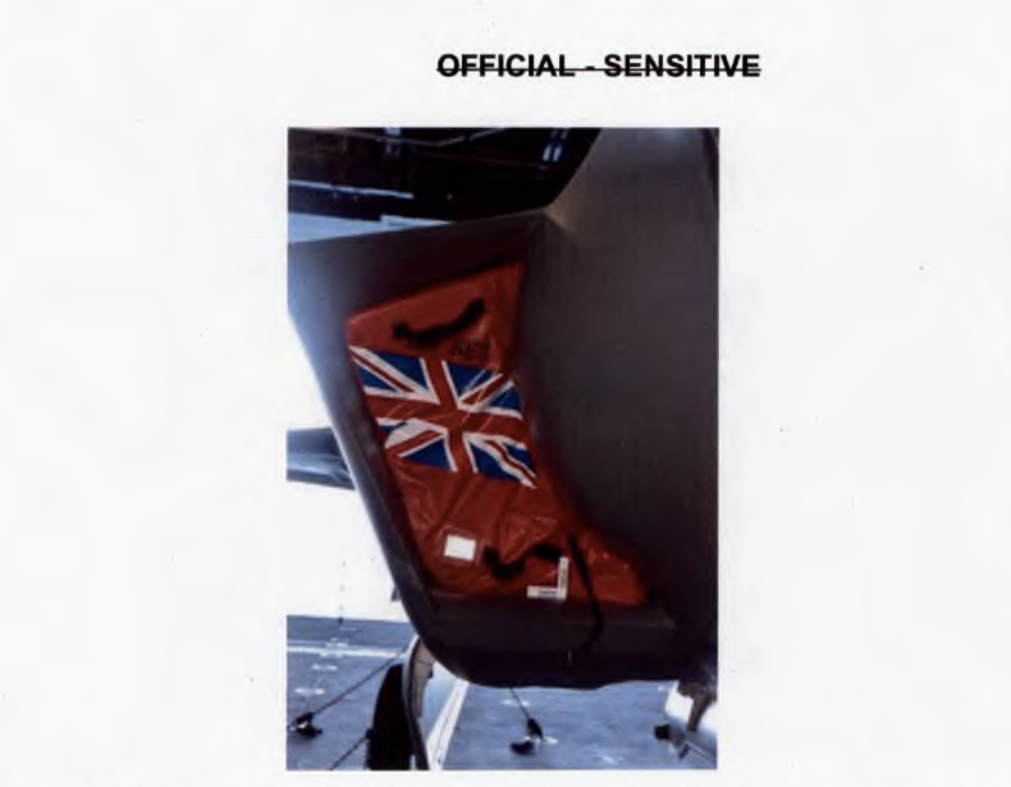
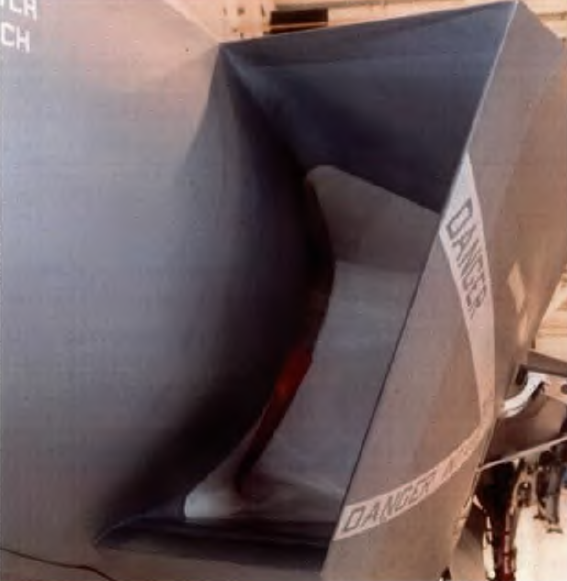
While the red gear, and the intake blank in particular, was the main cause of the accident, the report also flagged up other contributing factors. Such was the level of concern about other potential shortcomings that the report makes no fewer than 46 recommendations for things that should be changed going forward.
Perhaps most alarming is the finding that many personnel aboard the carrier, especially those tasked with flying and maintaining the F-35Bs, had not received enough training for operations at sea, a problem compounded by high levels of fatigue.
Related to this is the report’s questioning of whether No. 617 Squadron (617 Sqn), the Royal Air Force flying unit responsible for the F-35Bs aboard the carrier at the time, was also ready for the deployment. Only “55% of 617 Sqn had previous embarked experience and 77% of the [squadron’s] personnel had completed the minimum sea survival training,” according to the report.
The investigation further notes that the squadron “faced a higher operating tempo than it was prepared for, as the Carrier Strike Group aspired to a baseline flying rate associated with so-called surge operations.”
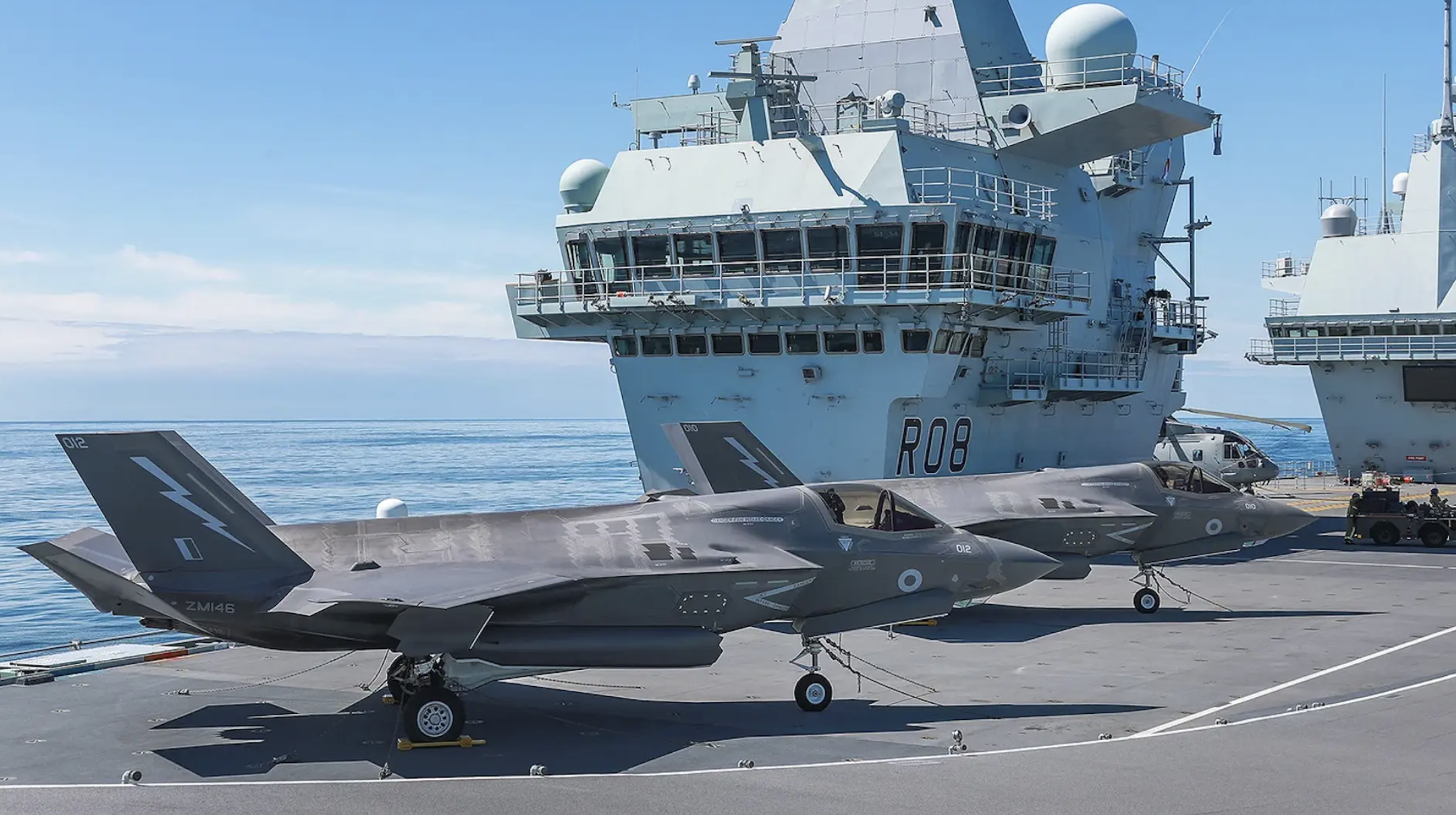
The report paints a picture of the squadron’s personnel becoming increasingly fatigued as a result of the pace of operations with a higher-than-usual sortie rate. This meant that some of them had reduced opportunities to take measures to help keep themselves sharp. They also reported limited time for recreational activities and even fresh outside air. One witness the investigators spoke to described the carrier as “the largest submarine in the Navy” — a pointed reference to the fact that some personnel were denied routine access to outside spaces due to their working commitments.
COVID-19 also exacerbated this, the report stating:
“The effects of the COVID-19 pandemic were particularly acute on [HMS Queen Elizabeth]. Personnel in eight-berth cabins suffered consecutive isolation periods causing some personnel to remain isolated for periods of up to 28 days. Isolating personnel caused those remaining at work to have fewer opportunities for rest.”
The investigation states that all of this was among a host of contributing factors to the accident.
Perhaps also with an eye on the leaking of video and photos showing the moment of the accident as well as the jet after being salvaged, the report also calls for better standards around security relating to the F-35B. It says that commanders need a better understanding of “safety and security requirements for a fifth-generation platform,” before pointing to this particular aircraft’s “elevated security thresholds, which places extra strain on safety.”

Even the process of finding the F-35B was not without problems. The report explains that the sonar locator beacon fitted to the jet was not detected during the search and recovery. Although chartered vessels equipped with remotely operated vehicles were able to find the jet on the seabed, the report warned that a failure of the beacon “could lead to a failure to locate a submerged aircraft in the future.”
With the aforementioned concerns surrounding the sensitivity of the F-35B, in particular, the inability to find one of these aircraft, once lost, represents a serious operational security risk.
Speaking before the U.K. House of Commons Defense Committee back in December 2021, National Security Adviser Sir Stephen Lovegrove pointed directly to the security threat posed by Russia, when it came to the F-35B that was lost. With its fleet of deep-diving special-mission submarines, as well as the deep-sea salvage ship Yantar, Russia had the means to recover parts of the jet.
“The kinds of precautions and operations that we are undertaking at the moment are designed at least in part to ensure that the technology of the F-35B remains as confidential as you would like it to be,” Lovegrove said at the time. “Those security aspects are very much at the top of our mind. My understanding is that the experts know where the aircraft is.”

There’s no doubt that operating fast jets from carrier decks is among the most challenging operational settings in military aviation. A level of risk is always going to be present and the potential for things to go dramatically wrong, very quickly, is always going to be exacerbated in this environment.
This was also the first carrier deployment for the U.K. F-35B, so some hiccups could certainly be expected. However, the report suggests this deployment was likely more problematic than it necessarily needed to be.
With a small fleet of U.K. F-35Bs and lingering concerns over the overall size of the procurement, the loss of one of these jets was also going to be particularly keenly felt, especially coming as it did amid what was a very high-profile cruise.

The report concludes by stating that the U.K. Lightning Force has not yet reached “critical mass,” meaning that squadrons are not able to mutually support each other during deployments. “Until critical mass is reached, [the Ministry of] Defense must recognize the trade-offs between readiness, growth, and safety,” the report warns. That situation might start to improve starting later this year, when a second operational unit, 809 Squadron, is established. This should help pave the way toward a declaration of full operational capability for the U.K. F-35B by 2025.
With questions remaining over how many more F-35Bs the United Kingdom will procure, especially with pressure from other major defense acquisition programs, not least the Tempest future fighter, the report into the loss of ZM152 is a reminder of the investment, financial and otherwise, needed to have a truly operationally effective — and safe — fast-jet carrier component.
Contact the author: thomas@thedrive.com
